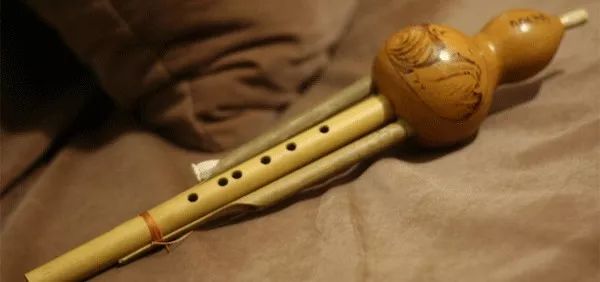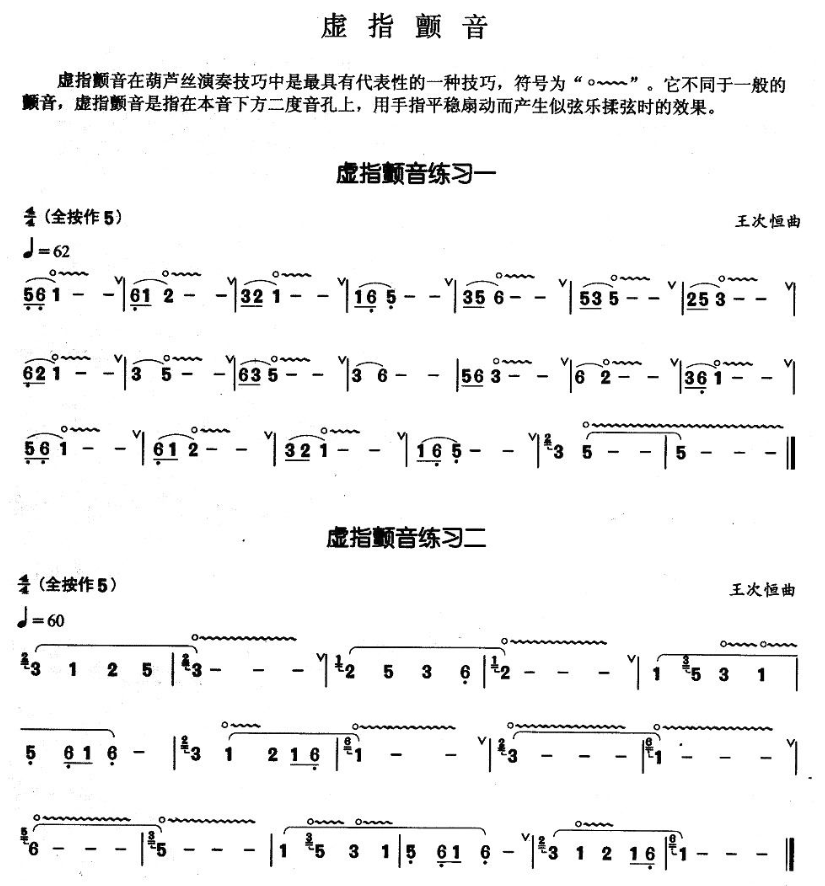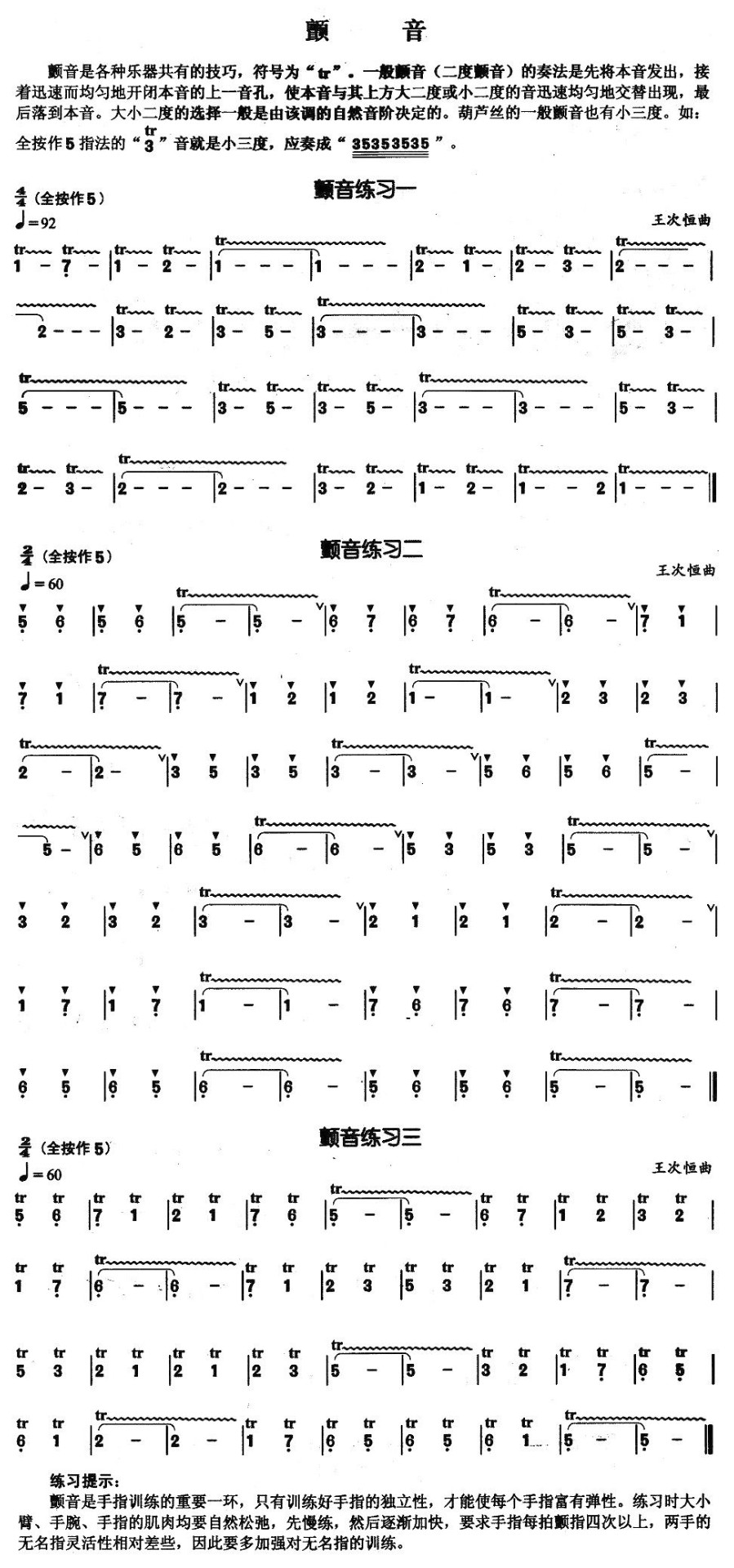Hulusi tremolo skills teaching and etudes
Vibrato is a common technique in the performances of Hulusi and Bawu. With vibrato in the music, the expressiveness of the music is more abundant. Especially the fast vibrato in the climax can be exciting. For example, "Golden Peacock" and "Amorous Bau" are two pieces of music that everyone loves. In addition to their beautiful melody, the most important point is the use of vibrato performance, which makes the music more cheerful and full of charm, which is amazing. And intoxicated.
The vibrato can make the blown sound have a wavy feeling. It is represented by tr in the score. The method of playing is very simple. It is to repeat between the original sound and the upper second. Add an Arabic number, such as 3 above the tr, it means the original sound and the upper third are repeated. If there is no number marked above tr, it means that the original tone and the upper second tone are played repeatedly. Everyone should pay attention to one thing. The vibrato of 3 on the calabash death and the bawu is generally played as 3535353, not 3434343, because it is first played in this way. It is uncomfortable to hear, because the sound of 4 is very unreal in Hulusi and Bauri. Secondly, the fingering of 4 is a bit complicated, and the conversion of 3 is very fast, which is very awkward and difficult. Therefore, the vibrato of 3 is usually played as 35353 without special requirements.
The practice of vibrato is a long-term exercise. Although the method is simple, it takes a certain amount of time to be proficient and fast. When practicing, start from slow training and gradually speed up after becoming proficient. When practicing, whether fast or slow, the speed should be consistent, not fast or slow, pay attention to strengthen the training of the ring fingers of both hands.

finger vibrato
Finger vibrato, the finger on the sound hole to open and close the whole hole quickly, it is the wave effect of the sound of different degrees. This effect is called finger vibrato, and the finger vibrato commonly used in different styles of cucurbit flutes include major second and third vibrato. Finger vibrato practice is the most important part of finger movement skills, so it should be practiced every day to ensure the flexibility, durability and elasticity of the fingers. The practice of vibrato should pay attention to the fast changing speed of the fingers, the strength should be strong, the elasticity should be good, and the frequency should be uniform.
virtual finger vibrato
Virtual finger vibrato is one of the unique skills of cucurbit flute. It is also called "air-tapping" - it is to use your fingers to smoothly punch (or half-hole, or incite the sound hole) on the sound hole separated by a sound hole below the original sound of the note, and its effect is similar to that of the belly. Vibrato is about the same. Taking the bass 5 as an example, when the virtual finger vibrato of 3 (sixth sound hole) is played, it is to incite the fingers on the fourth sound hole, or strike the sound hole. When the virtual tremolo of 2 (fifth sound hole) is played, it is hitting the third sound hole (or incitement).

vibrato
Abdominal vibrato is also called abdominal tremolo or gas tremolo. It relies on the elastic vibration of the diaphragm and abdominal muscles to exhale the air in waves, forming a smooth and subtle sense of fluctuation. Vibrato can be used according to emotional needs in the performance of cucurbit flute to achieve better results. In layman's terms, it is the vibration of the air flow caused by the contraction of the strength of the breath and relying on the contraction force of the internal organs. The lower abdomen naturally contracts inward and exerts force, so that the stable long notes alternate in strength and weakness regularly, so that the breath produces sound waves, which have the effect of beautifying and decorating the music. When playing a long note, the fingers are fanned evenly and quickly at the edge of the sound hole or above the sound hole, producing a sound similar to a gas tremolo.
When practicing, you can use a long note. The first blow is stronger and the second blow is weaker, and the muscles of the internal organs will also vibrate regularly. With the emergence of the feeling, and then gradually speed up, slowly will find the feeling. After you are proficient, the cooperation of the throat and lips will be complete. Its amplitude can be changed according to the needs of the music, from slow to fast or from fast to slow.

arm tremolo
"Armor vibrato" is a kind of vibration obtained by the tension and stiffness of the arm. The big arm drives the forearm, and the forearm drives the wrist to the fingers. The fingers must not bend or have any movement during the tremor, that is, the finger trembling should not be used at the same time as the arm tremor. With the elbow as the axis, the upper and lower arms are tense and rigid. The more tension in the arm, the faster the frequency of the tremors. When shaking "5tr~~~~~~~~~" (take the forehand position as an example), use the little finger of the left hand to fix it in one position as the axis to shake the thumb (similar to Bawu). If the shaking is 3, use the thumb The thumb pivots to quiver the index finger.
This skill should not be practiced too much, it goes against the relaxed physiological state.


 渝公网安备 50010702504639号
渝公网安备 50010702504639号